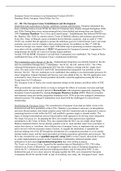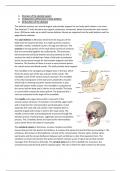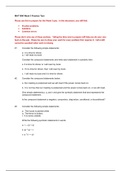Samenvatting
EUGIC - Summary Book 'European Union Politics' by Cini
- Instelling
- Vrije Universiteit Amsterdam (VU)
Contains chapters 2, 3, 4, 5, 7, 9, 10, 11, 12, 13, 16, 17, 18, 19, 20, 22, 23, 25, 26, 27. Organized in the order of the lectures. Contains all key points of the chapters. Written in English.
[Meer zien]












